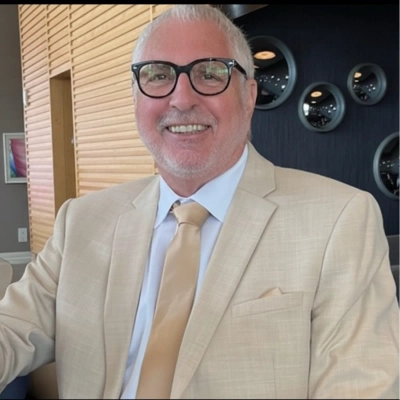25 Books and Thought Leaders that Influence Strategic Planning
Strategic planning is a critical component of business success, and this article delves into the insights of thought leaders who have shaped the field. Drawing from a diverse range of experts, the discussion covers topics from communication strategies to disruptive innovation. These valuable perspectives offer practical approaches to enhance organizational planning and drive sustainable growth.
- Communication Strategies Shape Successful Planning
- Purpose-Driven Planning Transforms Company Culture
- Reputation Builds Business Without Marketing Plans
- Vulnerability Strengthens Leadership and Planning
- Focus on Key Challenges Drives Effective Strategy
- Systems Thinking Enhances Organizational Learning
- Checklists Improve Strategic Execution
- Balancing Core Values with Progress
- Creating Uncontested Market Space
- Analyzing Market Forces for Sustainable Advantage
- Anticipating Disruptive Innovation Shapes Strategy
- Treating Decisions as Bets Improves Planning
- Customer-Centric Storytelling Drives Marketing Strategy
- Radical Transparency Enhances Decision-Making
- Goal-Setting Philosophy Transforms Strategic Planning
- Balanced Scorecard Approach Clarifies Trade-Offs
- Value-Driven Solutions Inspire Meaningful Planning
- Authenticity Builds Trust and Community
- Embracing Flexibility Improves Strategic Outcomes
- Systemization Enables Consistent Business Growth
- Humble Leadership Balances Discipline with Empathy
- Segmenting Priorities Aligns Business Objectives
- Measurable Goals Unite Teams Toward Shared Vision
- Front-Line Insights Drive Realistic Strategic Planning
- Focused Reduction Enhances Business Performance
Communication Strategies Shape Successful Planning
What if the secret to a successful strategic plan isn't the plan at all, but how you communicate it?
After reading "The Five Love Languages," I realized that the key to success isn't in the objectives, it's in how you connect those objectives to the people who will bring them to life. Just like in relationships, people perceive value, motivation, and recognition in different ways. And that insight changed how I approach strategy.
Chapman's framework helped me understand that it's about how you communicate objectives to your team. In fact, it inspired the foundation of my new book, "Interns to A-Players," which lays out exactly how I build high-performing remote teams using global, early-career talent. Whether you're mentoring interns or pitching a multi-million dollar plan to the C-suite, it all comes down to one thing: connection.
Now, when I map out a project, my first focus is stakeholder engagement. I customize my communication so each team or department gets the plan in a way that resonates with them. I take the time to understand what motivates each individual so I can provide the right incentives, recognition, or support.
Collaboration is the quiet power of making people feel seen, supported, and essential to the mission. And most people miss this: your strategy only works if your team wants it to. If they don't feel it, they won't follow it.
Strategic planning is about understanding people. By applying empathy, flexibility, and engagement, you get stronger buy-in and greater success. At the end of the day, it's about making the plan work for the people who will make it happen.

Purpose-Driven Planning Transforms Company Culture
'Start with Why' by Simon Sinek has been instrumental in reshaping my approach to strategic planning at Nerdigital. This book helped me transform our company narrative from being just a service provider to becoming a mission-driven organization with a clear purpose of empowering underdog entrepreneurs. The principles in Sinek's work fundamentally changed how we approach hiring, onboarding, and strategic decision-making by putting our 'why' at the center of everything we do. Our team now aligns all strategic initiatives with our core purpose, which has created much stronger organizational cohesion and clearer direction.

Reputation Builds Business Without Marketing Plans
I don't derive my ideas for "strategic planning" from a book or a thought leader. The one resource that has significantly influenced my approach to this business is the advice I received from my father. He told me that in this line of work, your best strategy is your reputation. His ideas were simple, but they shaped everything I do.
His core concept was that you don't build a business on a marketing plan. You build it on a handshake and a promise. He advised me that if I did a good job for every single client, and if I was a man of my word, the business would grow itself. He emphasized that my work was my reputation, and that was the only kind of planning I needed.
This philosophy has completely shaped how I run Achilles Roofing. We don't have a marketing budget that's as large as some of the other companies. Our strategic plan is simply to focus on doing a perfect job every single time. We treat every job as if it's a personal mission, because we know that a good job will lead to a good referral.
The result is a business that's built on trust, not on advertising. My advice to other business owners is to stop searching for a "strategic plan" in a book. The best resource you have is your own commitment to quality and your word. The best "strategy" is to simply be honest, do good work, and be a person of your word. That's the only plan you'll ever need.
Vulnerability Strengthens Leadership and Planning
In my world, "strategic planning" isn't about a five-year plan. It's about a commitment to our mission and our community. When you're in a business where a person's life is on the line, you have to be able to stay true to your purpose, even when things get chaotic.
The book that significantly influenced my approach to strategic planning is "Dare to Lead" by Brené Brown. It's not your typical business book. It's a book about vulnerability, trust, and courage. It taught me that strategic planning isn't about having all the answers. It's about being brave enough to ask the right questions.
The ideas in that book helped me to see that vulnerability in a leader is not a weakness. It's a source of strength. When I admitted that I didn't have all the answers, my team stepped up and we came up with a better solution together. We built a culture of trust where everyone is encouraged to be honest.
My advice is simple: the most effective strategic plan is the one that is brave enough to be real. The most important thing you can do as a leader is to lead with your heart, not just your head.
Focus on Key Challenges Drives Effective Strategy
One resource that has significantly shaped my thinking about strategic planning is "Good Strategy/Bad Strategy" by Richard Rumelt. What was particularly impactful was his emphasis on the idea that strategy is not simply a broad goal or, more pointedly, a slogan, but rather an identification of the key challenge and a focused approach to addressing it.
This concept has redesigned the way I think about planning for my business. Instead of attempting to do everything simultaneously, I began to think about leverage points — the few key moves that create a disproportionate impact. For example, instead of pursuing every marketing channel, I focused on building authority locally through partnerships and press mentions. This single focus led to growth that was both more efficient and measurable.
Rumelt's framework reinforced for me that a good strategy is as much about what you choose not to do as it is about what you decide to do — and that discipline has been enormously helpful.
Systems Thinking Enhances Organizational Learning
One of the ideation leaders whose works have deeply impacted my strategic thinking is Peter Senge, particularly through his book "The Fifth Discipline: The Art & Practice of the Learning Organization." His vision of "learning organizations" - teams reflecting routinely, learning continually, transforming systematically, and functioning systemically - has been central to how I envision HRDQ's work with HR professionals. It reminded me that strategy is not all goal-setting; it is also creating settings wherein feedback loops are built in, people are empowered to learn, and collective intelligence is invoked.
I learned from Senge that companies have to build systems thinking and a shared vision. In HRDQ's approach, this has involved consciously designing learning solutions to not only transfer capability but also to build capacities for self-knowledge, flexibility, and collaboration among teams. It also informs my perspective on the organizational structure itself. Ensuring our team development work cascades from leadership through means everyone aligns, everyone learns, and strategic goals are supported by the way they work together.

Checklists Improve Strategic Execution
There are so many worthwhile books that have influenced me, but one that stood out for its practicality was "The Checklist Manifesto" by Atul Gawande. His approach to streamlining processes, taken from aviation, was then applied to medicine and healthcare, and it was both eye-opening and inspiring.
What resonated most was how something as simple as a checklist could drive clarity, reduce errors, and improve outcomes in highly complex environments. I brought this insight into my own operations and HR teams, where it became a must-read resource. Using checklists to clarify expectations and establish accountability transformed the way we executed strategy — making it more efficient, reliable, and sustainable.
For me, the biggest takeaway was that great strategic planning isn't just about vision; it's also about creating simple, practical tools that enable teams to execute with consistency and confidence.

Balancing Core Values with Progress
Jim Collins' 'Built to Last' fundamentally shaped my strategic planning by teaching me the power of preserving core values while stimulating progress. During my 30+ years in community development and now in real estate, I've applied his concept of the 'Genius of the AND' - being both principled AND practical. At Bright Future Homebuyers, this means we remain unwavering in our commitment to creating win-win solutions while constantly evolving our approaches to meet homeowners' changing needs. This balance has been crucial in helping me transition my leadership skills from nonprofit to entrepreneurship while maintaining the human-centered approach that defines our work.
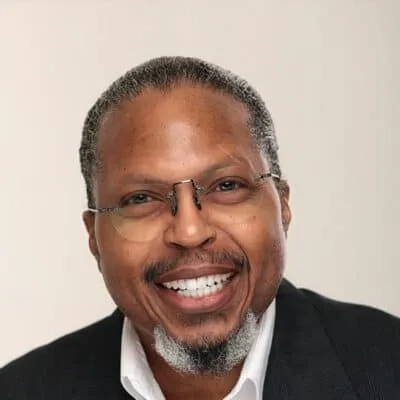
Creating Uncontested Market Space
One of the most impactful materials for me has been Blue Ocean Strategy. In the business of commercial ice, there tends to be a high emphasis on competing for the same customer with the same offerings. This book allowed me to change my way of thinking from head-to-head competition to finding areas where we can create new value for customers.
That vision has led me to consider how we frame our subscription model. Rather than simply presenting it as a means of gaining access to equipment, I see the overall value of convenience, predictability, and peace of mind. It's helped me think not only about how we enhance our service but also about how we can reimagine what customers want from an ice solution.
Ultimately, this resource honed my skill at approaching planning with a focus on building uncontested space, where the discussion is less about price and more about offering something uniquely valuable.

Analyzing Market Forces for Sustainable Advantage
One resource that has had a big impact on how I approach strategic planning is Michael Porter's work on competitive strategy. Early in my career, I remember wrestling with clients who had brilliant products but no clear sense of how to position themselves against competitors. Porter's frameworks, especially the Five Forces model, taught me to analyze markets rigorously and think about where sustainable advantage truly comes from. I started applying his concepts at Spectup when advising startups on fundraising and investor positioning, helping them clarify why an investor should choose them over alternatives.
It changed the way I structure conversations: instead of just presenting what a company does, I focus on where it fits in the market, what pressures it faces, and how it can defend its growth. This mindset encourages companies to be intentional rather than reactive, and it's been invaluable in building strategies that resonate with both investors and internal teams. Beyond tools and frameworks, Porter's work also reinforced the importance of disciplined thinking, being precise about choices and trade-offs rather than trying to do everything at once.

Anticipating Disruptive Innovation Shapes Strategy
One of the resources that has influenced me most is Clay Christensen's work on disruptive innovation. What struck me early on was his ability to show how even the most successful companies can lose ground if they fail to adapt to shifts that start small but quickly reshape entire industries. That perspective has stayed with me throughout my career. When I look at the intersection of sustainability, technology, and recycling today, I see the same forces at play. The companies that treat these areas as side projects are often the ones that miss the inflection points. The ones that weave them into their core strategy are the ones that build real long-term value.
His thinking pushed me to always step back and ask not just what the market looks like now but what underlying changes will matter most in three to five years. It shaped the way I negotiate partnerships and structure investments, because the real prize isn't in short-term wins but in positioning ahead of the curve. In fast-moving markets, that mindset has made the difference between simply keeping up and leading with conviction.
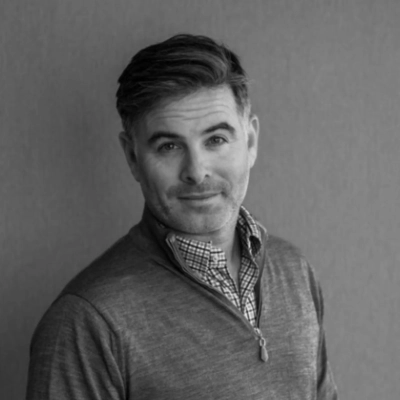
Treating Decisions as Bets Improves Planning
One resource that shaped me was "Thinking in Bets" by Annie Duke, a former professional poker player.
Her framework of treating every decision as a bet, with probabilities instead of certainties, completely changed how I approach strategic planning.
In marketing, clients often want guarantees—"This campaign will drive X results." But reframing it as a bet forces you to acknowledge uncertainty, weigh the odds, and plan for multiple outcomes.
It has made my strategies more resilient, and it's also made conversations with clients more honest because we're not chasing "right or wrong," we're aligning on what the smartest bet looks like with the resources available.

Customer-Centric Storytelling Drives Marketing Strategy
'Building a StoryBrand' by Donald Miller has been transformative for my approach to strategic planning, particularly in how we position our marketing initiatives. The book taught me to place our customers at the center of our strategy as the heroes of their own journey, rather than focusing solely on our company's capabilities. This shift in perspective has led to more engaging campaigns and stronger connections with our audience at Lusha, ultimately driving better business outcomes.

Radical Transparency Enhances Decision-Making
Ray Dalio's "Principles" influenced how I structure decision-making and company culture at Jumper Bee. The emphasis on radical transparency and respectful disagreement prompted me to build a team where everyone is comfortable exchanging and challenging ideas.
By fostering an open communication culture, we avoid wasteful mistakes and find creative solutions for client events. It also allows our team to work autonomously, with confidence that there's a supporting framework behind decisions and priorities.
This philosophy has extended to long-term strategic planning. By relying on data, feedback, and concise guidelines, we ensure that Jumper Bee consistently generates high-quality events and is also responsive to emerging opportunities.

Goal-Setting Philosophy Transforms Strategic Planning
"Radical Focus" by Christina Wodtke has significantly influenced my approach to strategic planning. Unlike typical business books, it uses storytelling to teach the goal-setting philosophy behind OKRs (Objectives and Key Results). This method makes the concepts more relatable and memorable. As someone who usually reads business and personal development books, I found this approach refreshing and engaging. The book's actionable advice is easy to implement, and I often refer back to the characters and events when setting OKRs with my team. It has helped shape my thinking by emphasizing the importance of clear objectives and measurable results in achieving strategic goals.

Balanced Scorecard Approach Clarifies Trade-Offs
Kaplan and Norton's Balanced Scorecard changed my planning from "revenue first" to "balanced and causal." For Comligo, we still track revenue, but we also monitor student retention and NPS (Customer), time-to-match a teacher and first-lesson success rate (Internal), and teacher onboarding and training completion (Learning & Growth). That shift clarified trade-offs: when time-to-match slipped, we knew it would hurt retention later, so we invested in matching quality even if it slowed short-term sales. The scorecard keeps strategy honest.

Value-Driven Solutions Inspire Meaningful Planning
Barack Obama's 'The Audacity of Hope' has been a significant strategic influence on me. In particular, I admire the way he frames challenges as opportunities for long-term, value-driven solutions. I appreciate Obama's emphasis on listening, building consensus, and then making pragmatic yet principled decisions.
I try to apply this mindset in my own business, AVFI. I strive to view planning as something that isn't just about spreadsheets and forecasts, but rather as a way to inspire people to come together around a direction or vision that feels achievable and meaningful. Obama's perspective has taught me to both think about and implement planning with more clarity and purpose.
Authenticity Builds Trust and Community
One resource that fundamentally changed my strategic planning approach is actually my experience appearing on television with my twin boys. Being in the public eye taught me that authenticity and transparency aren't just nice-to-haves--they're essential for building trust at scale. This led me to structure Sierra Homebuyers around radical honesty, like when we tell homeowners upfront if selling to us isn't their best option and connect them with other resources instead. That genuine, people-first approach has become our strategic cornerstone, turning every interaction into a potential community advocate rather than just a transaction.

Embracing Flexibility Improves Strategic Outcomes
Hi there,
I'm Jeanette Brown, a personal coach and founder of Jeanettebrown.net.
I'd love to share my thoughts on strategic planning for COO Insider:
I didn't think a self-help book could change the way I plan, but then Ruda Iande's 'Laughing in the Face of Chaos' did. It reframed strategy as something you steer with a calm nervous system, a sense of humor, and small, reversible moves.
Since reading it, I build micro-bet maps with a brief pre-mortem and a 24-hour repair loop. When a cohort launch stalled last year, I cut it to a four-week pilot, moved one variable at a time, and watched engagement climb while the team stayed composed.
Simply put, the book gave me permission to trade brittle perfection for durable iteration — and my plans (and people) are better for it.
Thanks for considering my perspective for COO Insider!
Best,
Jeanette Brown
Founder, jeanettebrown.net
Creator of "Reset Your Life Compass" masterclass (https://jeanettebrown.net/work-with-me/)
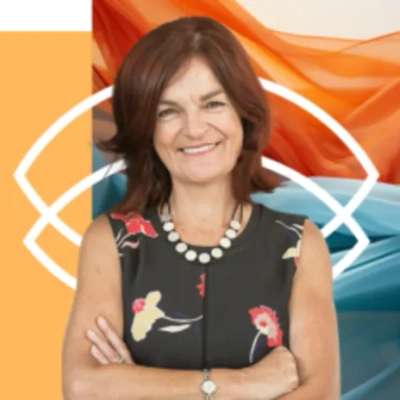
Systemization Enables Consistent Business Growth
The E-Myth Revisited by Michael Gerber completely changed how I think about scaling our home buying business. Gerber's concept of working 'on' the business rather than 'in' it led me to systemize everything--from our initial homeowner consultations to our cash offer process--so my team can deliver consistent results whether I'm present or not. This shift allowed me to focus on strategic growth across Mobile, Baldwin County, and Pensacola while ensuring every seller gets the same honest, transparent experience that reflects our family values.
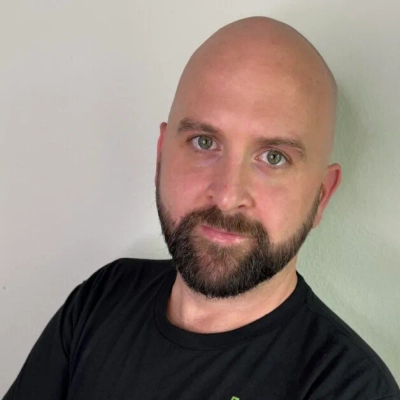
Humble Leadership Balances Discipline with Empathy
"Good to Great" by Jim Collins revolutionized my strategic planning after transitioning from military service to real estate. As a veteran who moved from the structured environment of the Army to entrepreneurship, Collins' concept of 'Level 5 Leadership'—combining personal humility with professional will—resonated deeply with me. I've applied this by building Integrity House Buyers on the same disciplined execution I learned in the 101st Airborne, while maintaining the humility to listen carefully to homeowners facing challenges like PCS moves or foreclosure. This balance helps us create solutions that genuinely serve their needs rather than just closing transactions.
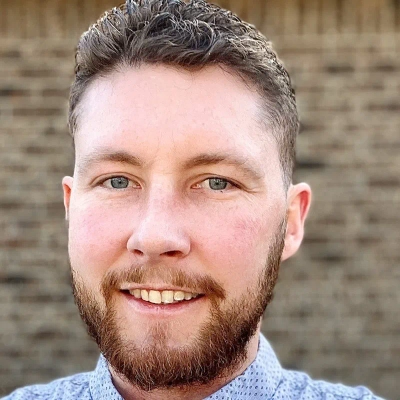
Segmenting Priorities Aligns Business Objectives
A book that really resonates with my business principles is "Zone to Win" by Geoffrey Moore. The framework described in this book has been implemented and brought results in several top companies in Silicon Valley and beyond. The idea in this book talks about segmenting your strategic priorities over three horizons (scaled business lines, new business incubations, and accelerating organic bets). This segmentation allows the business to allocate funding, supporting resources, and KPIs/OKRs to track the progress in a "closed loop." Example scaled business lines should be tracked on revenue and profitability, while incubated business lines should be tracked on number of customers and customer adoptions. This allows the CEO to operate the current and future state of the business using strategic planning best principles.
The implementation of this framework is not just for its concept but must be applied to business systems, GTM, and financial investments. This practice allows companies to stay aligned towards their scaled businesses and organic/inorganic bets to help them achieve seamless strategy through execution and measurable outcomes.

Measurable Goals Unite Teams Toward Shared Vision
One resource that has deeply influenced my approach to strategic planning is "Measure What Matters" by John Doerr. The book's focus on the OKR (Objectives and Key Results) framework helped me realize the importance of setting measurable, transparent goals that align every team member toward a shared vision. At Pawland, this approach has shaped how we balance ambitious long-term growth with actionable short-term priorities, ensuring that strategy is always tied to meaningful outcomes.
Skandashree Bali, CEO & Co-Founder, Pawland | https://www.pawland.com

Front-Line Insights Drive Realistic Strategic Planning
For a long time, my approach to strategic planning was a top-down, theoretical exercise. I would spend a significant amount of time on a large, ambitious plan, but it was disconnected from the reality of my business. My team wasn't invested, and our business wasn't growing as quickly as it should have been.
The resource that has most significantly influenced my approach to strategic planning is a simple, old-school idea: learning from the front lines. The ideas that have shaped my thinking the most aren't from a thought leader; they're from the people on the ground.
From an operations standpoint, a person on my team might have a simple idea for how to make our fulfillment process more efficient. From a marketing standpoint, a customer might have a simple idea for a new product. My job is to listen and to find the patterns.
This approach has had a massive impact on my strategic planning. My plans are now more realistic, more ambitious, and more likely to be achieved. My team is more engaged because they are a part of the planning process. The most important thing I've learned is that the best strategic plan isn't a top-down mandate. It's a bottom-up process that is a direct result of listening to the people on the front lines.
My advice is that you need to stop looking for a resource that will give you all the answers and start looking for a team that is willing to give you all the problems. When you do that, your strategic plan becomes a direct reflection of your business's reality.

Focused Reduction Enhances Business Performance
"Work less, make more" from James Schramko. The main idea being that there is a lot of value in reducing and pruning in order to have a stronger focus on what's essential.
I have seen this work for service businesses like my agency and consulting firm, but also in ecommerce where it's often better to push a small segment of products to a clear target audience, than hundreds or thousands of products to the masses.
Gert Mellak, CEO at SEOLeverage.com





